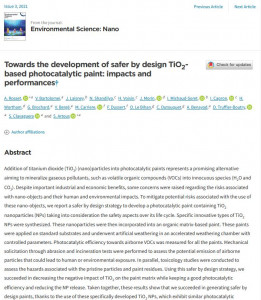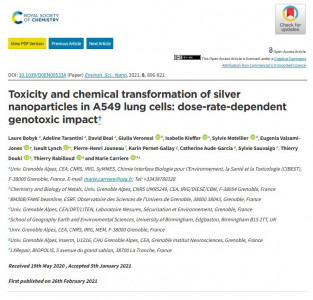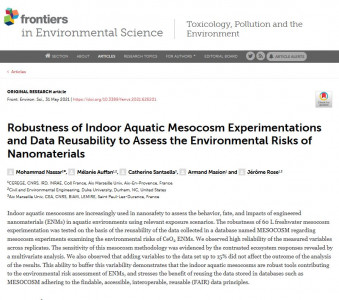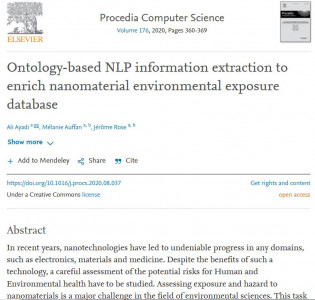Astrid Avellan will defend her PhD on "Relating structure, reactivity and cellular interactions of inorganic nanotubes ; case of imogolites" the 9th of december, 2015 at 14h30 at CEREGE (Aix en Provence).
![]() >Relating structure, reactivity and cellular interactions of inorganic nanotubes ; case of imogolites
>Relating structure, reactivity and cellular interactions of inorganic nanotubes ; case of imogolites
Only a few studies of (eco)toxicology linked the physico-chemical properties of nanoparticles to the toxicity mechanisms or the stress they induce. Moreover, no clear conclusions can be drawn at present because of the variability of nanoparticles used in studies.
The present study used the inorganic Ge-imogolite nanotubes as a model compound. The toxic effects of length, number of walls, structural defects, and chemical composition were assessed towards the soil bacteria Pseudomonas brassicacearum. Several mechanisms modulating the toxicity of Ge-imogolite were then identified. Indeed, reactive sites at the tube ends induce a slight toxicity via a strong cell interaction and the generation of reactive oxygen species. Creating vacant sites on the surface of Ge-imogolite (ant thus increasing the number of reactive sites), appears to cause a deficiency of nutrients in the culture media correlated with a higher degradation of the tubes, leading to a high bacterial growth decrease. Finally, structural iron incorporation into Ge-imogolite structure transforms them into an iron source, being degraded and becoming growth promoters. In this work, the new tools capacities for the study of nanomaterials/cells interaction have been studied.
Keywords : Ge-imogolite, Pseudomonas brassicacearum, controlled synthesis, reactivity, elements speciation, nanomaterials/cells interactions, Hyperspectral imaging system, X-ray nanotomography.
Please find more details on the following document.










